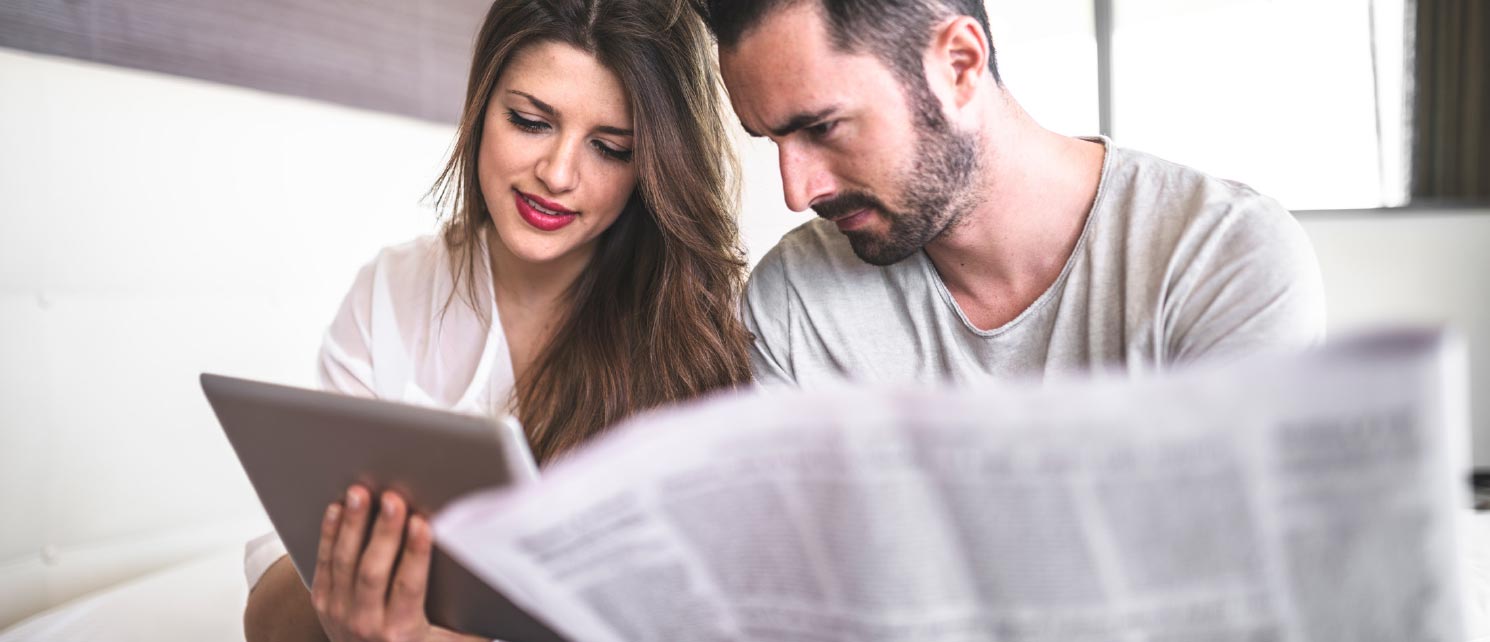Do you have a healthy Balance Sheet?
Ever received your financial accounts from your accountant and puzzled over some of the terms? What are prepayments, accruals and long-term liabilities? Why is meant by “tangible and intangible assets”? And first things first, what purpose does my Balance Sheet Statement even serve? Not to worry, this is common. To the non-accountant, matters of accountancy need explanation.
Figurit spend a lot of time with clients explaining the jargon. Read from our clients how we help them with business and tax compliance.
This article (Part 1 of 2) sums up some of the unusual key terms you will see on your Balance Sheet Statement and accompanying Notes pages. Download our Handy Help sheet for more information, and feel free to share our content with your colleagues, friends and family.
Why is a Balance Sheet called a Balance Sheet? (It’s not a joke!)
Profit & Loss Statement
A summary of your business income and business expenses within a given time-frame.Balance Sheet Statement
A snapshot of your business assets and liabilities on a given date. Your Balance Sheet is an essential guide to show the financial condition of your business, including its liquidity.Liquidity
Represents the ability to convert business Assets to cash at their correct value, after covering Liabilities. It’s a vital statistic used when buying and selling a business, for example, a dental practice.Balance Sheet: Fixed Assets
Fixed Assets
Sometimes also called Capital Assets, these are retained for continuing business use with a useful life over one year. Typically, they cannot easily be converted to cash without a sale and they are the least “liquid” of the business assets. They can be either “tangible” or “intangible”.Tangible Fixed Assets
Are physical assets and includes:- Equipment, Fixtures & Fittings
- Motor vehicles
- Commercial Property
- Intangible Assets
Goodwill
An Intangible Asset that businesses build up over time and it relates to the value of say, the patient list, brand name and your systems and processes. In summary it’s the value of all your hard work!Balance Sheet: Current Assets
Current Assets
Generally represents the value of business Assets that will convert into cash in the course of one year under usual trading conditions. The order that Current Assets are presented in your accounts is typically according to their liquidity; how quickly you can access the funds and includes:- Cash in your hand
- Money in the bank
- Trade Debtors
- Stock
- Prepayments
Debtors
Also known as “Accounts Receivable” this is the value of money owed to you by customers.Prepayments
When you have paid an expense in advance an accountancy adjustment is made to ensure the expense in represented in the correct accounting period. For example, if you pay a year’s business rent on the day before your year-end but it relates wholly to the year in advance, an adjustment is required.Healthy?
When Debtors are excessively high, you could have an issue with payment collection. This is rare for doctors and dentists though who are largely paid via a patient plan or on the day of treatment.Current Liabilities
Current Liabilities
Generally represent what a business is due to pay back on borrowings or services and products used but not paid for. Being “current” they are due within one year and includes:- Overdrawn Bank balances
- Credit cards
- Loans
- Trade Creditors
- PAYE (due to HMRC)
- Wages (due to staff or directors)
- Accruals
Accruals
When you have incurred the use of a service but have yet to receive an invoice. Telephone is a good example as in the final month of the year you will use your phone as usual but the invoice will only come after the year-end. In the meantime an accounting adjustment is required to ensure the expense is included in the correct accounting period.Healthy?
Many businesses use credit facilities to manage their operations and high Creditors one day could be low Creditors the next following payment of suppliers and staff. However, high Current Liabilities could be a danger sign of bad cash flow management or overspending and if Creditors start to creep up month on month this requires review.Net Current Assets
Healthy?
Ideally, this number should be as high as possible, representing that if you “cashed in” all your Current Assets then your Current Liabilities will be covered.Long-term liabilities
Long-term Liabilities are similar to Current Liabilities only they are typically due over the longer term, in excess of one year.Net Assets
Healthy?
Called “Net Assets” for a reason it should be a positive number, however, it can be a negative number if Liabilities exceed Assets. High Net Assets means that if you “cashed in” all your Current Assets and sold all your Fixed Assets then your Current Liabilities plus your Long term Liabilities will be covered giving you some reserves.Capital Account
The final section of the Balance Sheet relates to Capital and Reserves or also known as Shareholder’s Equity. This section is presented differently depending if you trade as a sole trader, limited company or partnership.- Personal funds that has been invested in the business – this year to date
- Funds drawn from the business for personal use – this year to date
- The profit (or loss) from the business – this year to date
- A brought forward, rolling figure for the above points in previous years






